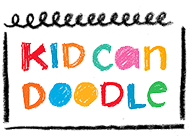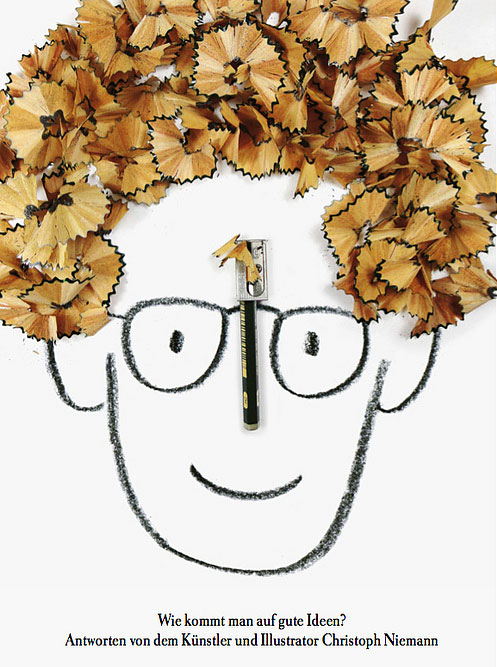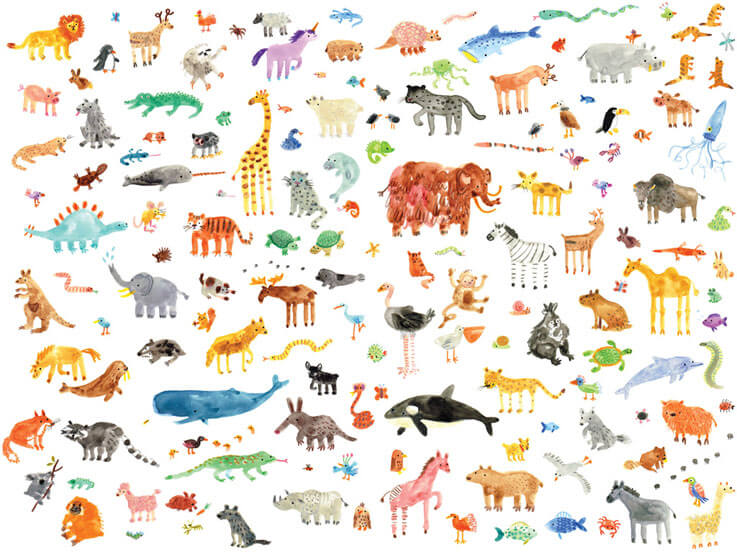
If you’ve ever seen Londoner Lorna Scobie’s illustrations, you’ve probably noticed one thing: she often draws animals. Lions, giraffes, cats, rabbits — you name it! She draws them. I adore her animals — they’re so charming and full of character — and wanted to share her work with you. Luckily, I was able to steal Lorna away from her studio for a brief 3 & 1/2 interview!
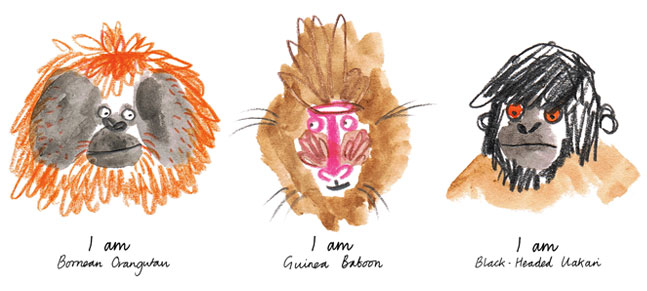
Are there any animals that you find challenging to draw?
I find monkeys SUPER difficult to draw; they have so many legs and arms and tails, it gets a bit confusing! I’m ok at their faces — it’s the rest of them I struggle with! Other animals I find difficult to draw are hippos, unicorns, sheep and lions. Sometimes when I am struggling with how to draw an animal I look at a picture, but usually I use my imagination. My favorite animals to draw are antelopes, tigers and lizards because I love drawing their patterns.
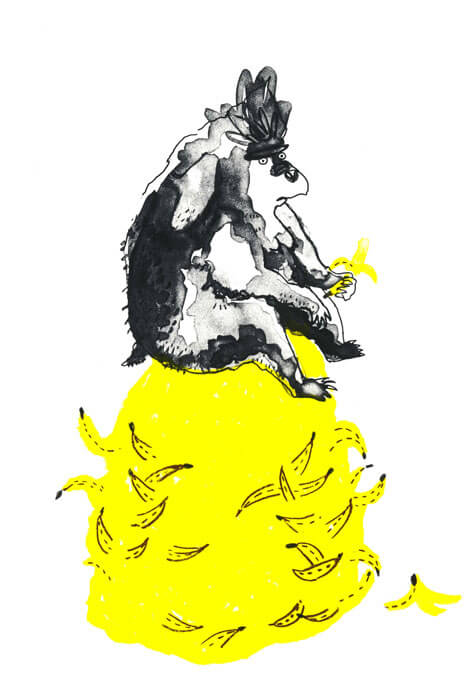
Your animals look like they could almost talk. Are they inspired by people you know?
That’s an interesting question – they aren’t deliberately based on people I know, but I’m sure traits in my family and friends turn up in my drawings. I think my gorilla drawing is a bit like my dad, but I have only thought that afterwards. My dad doesn’t look like a gorilla… I think there is just something in the eyes that remind me of him. I reckon most of my animals are probably just versions of me, although I’m not as spaced out as they are!
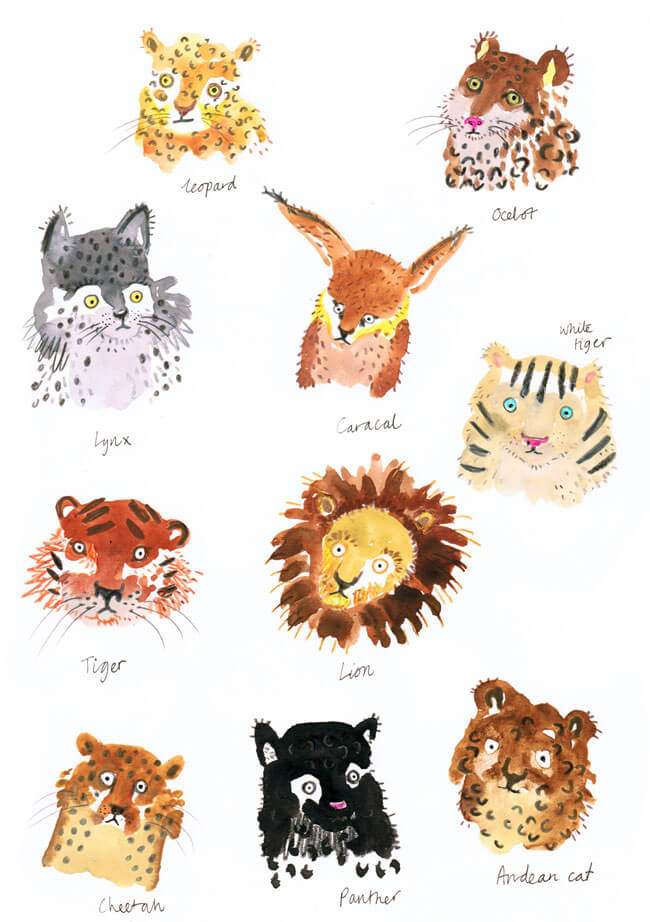
If you could recast a book or film with your own drawn characters, which would you pick, and how would you do it differently? (For instance, if you picked Goldilocks and the Three Bears, would you change the animals or the Goldie?)
One of my favorite books is One Hundred Years of Solitude by Gabriel Garcia Marquez and I try to read it once a year. It’s about a South American family over several generations, and all the family members basically have the same name (Arcadio or Aureliano) so it’s a challenge to keep track of what is going on! I would recast my drawings of lizards as the family, so that each character would be a different color – it would definitely be easier to tell the difference between Red Arcadio and Green Spotty Arcadio!
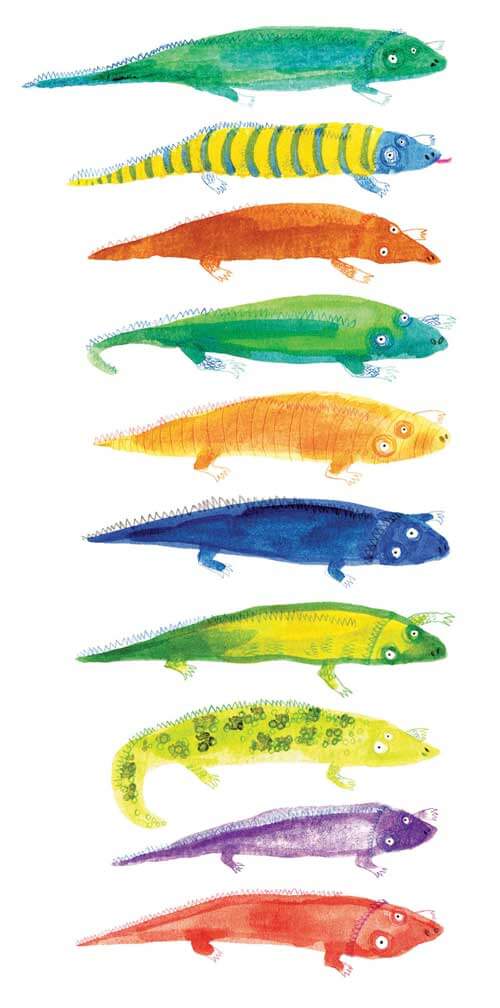
Please complete this sentence: I like to draw ____.
Animals. All the time. Even ants.
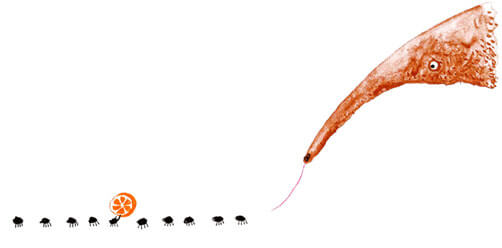
Thanks for sharing your awesome animals with us, Lorna! You can follow Lorna on Twitter and Instagram. All images courtesy of Lorna Scobie.
